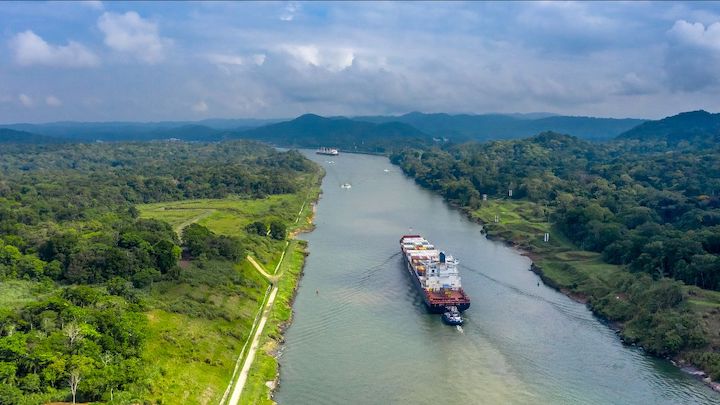Finally, the world is showing signs of steady economic recovery after last year’s pandemic-induced decline. The UN Conference on Trade and Development (UNCTAD) announced last month that the global economy is now expected to grow by 4.7% in 2021. The World Trade Organization (WTO) also estimates that world merchandise trade will increase by 8% in volume this year.

While these predictions are optimistic, as we saw recently -and as we all witnessed during the past year-incidents and unforeseen circumstances can arise at any minute and impact our day-to-day life significantly, as well as our global macroeconomic outlook. It is safe to say we have all learned the importance of adaptability and preparation for proper response to allow for effective management of unanticipated events and continuity of service.
1. Pilot Control
The Panama Canal is unique in that we take control of each vessel during its transit. This is because transiting through our waterway involves a series of complex navigational maneuvers, including passage through the locks. To ensure the safety of each transit, we require our pilots to board and steer all vessels from start to finish. Their years of experience and deep knowledge of the currents and the locks ensure each vessel passes through the waterway safely.
Given pilots, among other personnel, are required to board each vessel and interact with the crew, we have heightened our health protocols amid the pandemic. These protocols will remain in place to ensure the continued safety of our customers and workforce.
2. Tugboat Escorts
To supplement the pilot’s experienced guidance, we require tugboats to accompany vessels through their transits for any eventuality. This includes their passage through the Culebra Cut, the narrowest section of the waterway. This protocol is critical, particularly for Neopanamax vessels, the largest of which can carry around 15,000 TEUs.
3. Water Management
Maintaining steady water levels is another critical component of safeguarding our service, as our operations depend on freshwater from Gatun and Alhajuela Lakes. In response to recent climate variability, the Panama Canal team has adopted conservation measures to sustain a level of draft that allows us to safely maneuver vessels through the Canal.
As a longer-term solution, we are also advancing the pre-qualification for the design, construction and implementation of a robust water management system that will guarantee enough water, not only in volume, but also in quality and control for the next 50 years. Addressing the latter will involve adopting technology to properly forecast water levels and effectively control water flow to our navigational channels. All in all, the Canal expects to make the waterway’s largest investment since the Expansion Program to secure water in the long-term.
This water project, however, is just one of the wider multimillion-dollar investments we make on an ongoing basis to ensure our operations remain safe and reliable. Every year, the Panama Canal spends more than $250 million in its maintenance program and invests roughly $200 million in projects ranging from replacing floating equipment to modernizing critical infrastructure and beyond
4.Ongoing Maintenance & Modernization
Dredging is one example of a particularly important, ongoing maintenance effort, as there is bank erosion and constant sedimentation coming from the natural water sources that feed its lakes. To make sure vessels always have adequate draft and channel width, our in-house team dredges the waterway almost daily, maintaining narrow operational areas such as the Culebra Cut and clearing the bottom of all navigation channels.
All projects are carefully planned to ensure there is no disruption to the Canal’s operations. In the coming years, we plan to invest around $3 billion in dredging, infrastructure projects and other modernization efforts to ensure we continue providing uninterrupted service.
These core practices, combined with countless other safety procedures, are the reason behind the Panama Canal’s long track record of safe and reliable operations. They enable us to adapt and respond to unforeseen circumstances, while keeping world trade moving. As the global economy recovers, we will continue to uphold this principle of safety, while finding ways to create, capture and render value for our customers.











